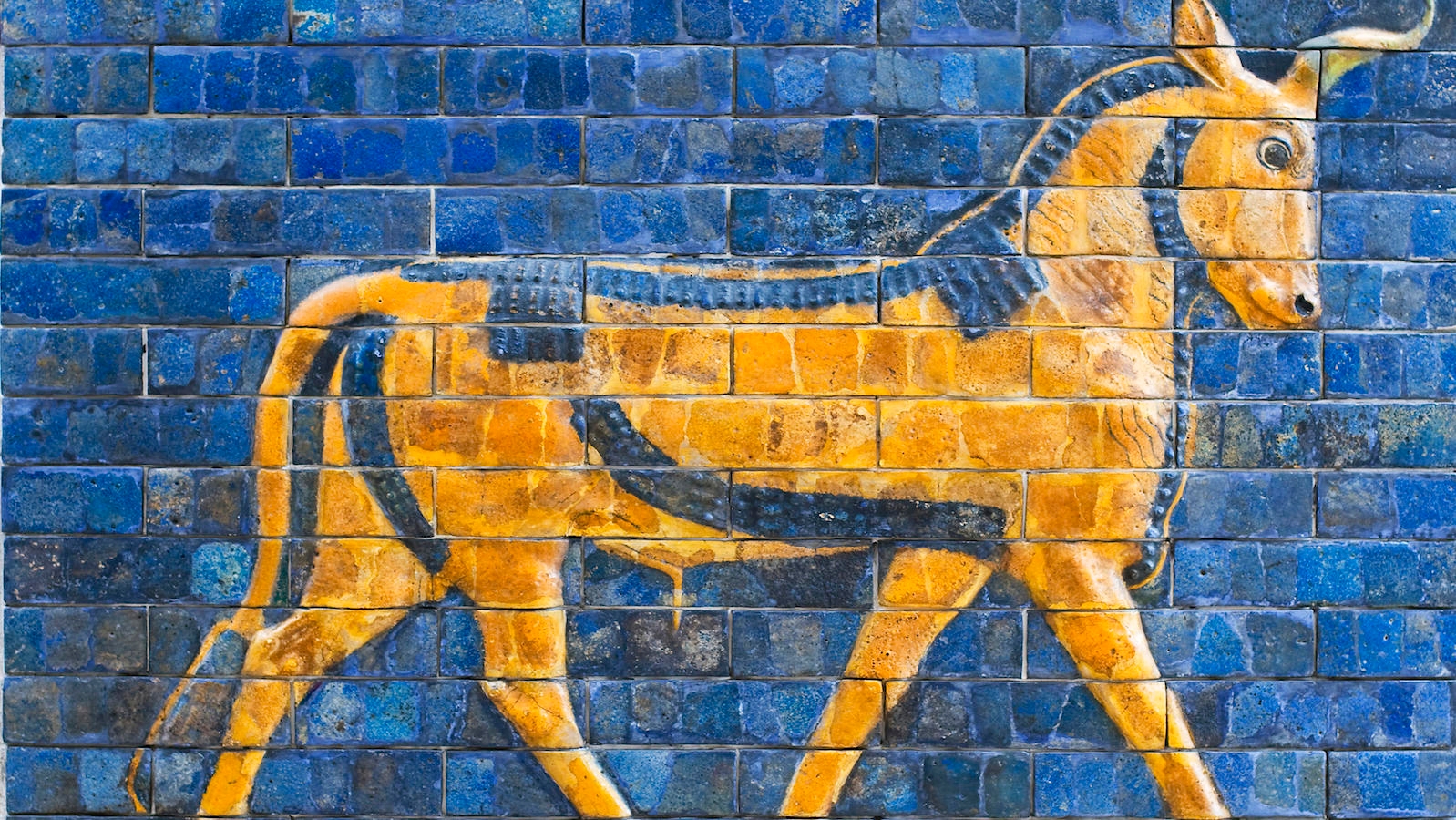The story of the golden calf, the greatest scandal of the wilderness period, is recalled in Deuteronomy 9:9‑21 (Parashat Eikev), based on the fuller account in Exodus 32 (Parashat Ki Tissa). What the calf represented is debated by scholars. Images of bulls and calves were common in Near Eastern religions. In Egypt, a bull, Apis, was sacred to the god Ptah and emblematic of him. In Canaanite literature, the chief god El is sometimes called a bull, although this may be no more than an epithet signifying strength, and the storm god Baal sires an ox in one myth.
A relief from Asia Minor shows two individuals worshiping at an altar before a bull. Figurines of bulls and calves have been found at several Canaanite sites. At least one was also found at an Israelite site, in the Samaria hills. In some of these, the bull or calf represents a deity — usually a storm god — directly. At other times it represents the deity’s mount, signifying the deity indirectly.
Aaron’s Motivation and the People’s Request
It is unlikely that Aaron intended the calf to represent another deity, since he proclaimed a festival in honor of YHVH [God] when he finished making it (Exodus 32:5). At first glance the people’s declaration, “This is your god, O Israel, who brought you out of the land of Egypt” (Exodus 32:4), seems to imply that they took it as a depiction of YHVH.
But in their request to Aaron to make them a god, they explained that they wanted a god to lead them because they did not know what had become of Moses, who led them out of Egypt (Exodus 32:1). This seems to imply that they wanted the calf to replace Moses, apparently in his role as mediator of YHVH’s presence to the people.
With your help, My Jewish Learning can provide endless opportunities for learning, connection and discovery.
In other words, they did not intend the calf to depict YHVH but to function as the conduit of His presence among them, as Moses had functioned previously. Many scholars believe that the calf did so by serving as the pedestal or mount on which YHVH was invisibly present, as did the cherubs in the Holy of Holies. This conception of the calf is illustrated by ancient images of a god standing on the back of a bull or another animal.
According to this interpretation, the declaration “This is your god” is not an exact quotation of what the people said at the time, but a paraphrase of their words based on hindsight, reflecting the way they ultimately treated the statue. In any case, it is clear from Exodus 32:8 that even if Aaron or the people had legitimate intentions, the people immediately fell to worshiping the calf and violated the Decalogue’s prohibition against worshiping idols.
King Jeroboam’s Calf Shrines
Some scholars believe that the entire golden calf story is a pejorative recasting–also based on hindsight–of a northern cult legend about the origin of the golden calves that Jeroboam erected in Bethel and Dan (I Kings 12:2‑33). In this view, Jeroboam’s calves were originally intended as pedestals or mounts for YHVH, like the cherubs, not as idols.
With the passage of time people began to venerate them, as shown by Hosea’s complaint that people were kissing calves (Hosea 13:2). This development may have been facilitated by the fact that the calves were not kept hidden, as the cherubs were in the Holy of Holies, but stood outdoors in sanctuary courtyards and were visible to the public. This development is analogous to what happened with the copper serpent that Moses made as a charm for healing snakebites: by the time of King Hezekiah, people began to worship it and it had to be destroyed (Numbers 21:4‑9, see 2 Kings 18:4).
A Once Positive Story, in a Different Light
According to this theory, the story of Aaron’s golden calf originated as a legend about the origin of (one of) Jeroboam’s calves, and originally described its manufacture approvingly, comparable to the account in Exodus about how the people contributed raw materials with which Bezalel and his staff fashioned the Ark and cherubs and the rest of the Tabernacle, following designs provided by God (Exodus 25-27, 35-39). Aaron’s statement that he threw the gold into a fire and “out came this calf” (Exodus 32:24) implies that the calf was manufactured with supernatural assistance, which supports the view that the story was originally an approving one.
Later, after Jeroboam’s calves came to be treated as idols, the manufacture of calves was seen in hindsight to lead inevitably to idolatry and the story about Aaron’s calf was revised to show the phenomenon as sinful from the outset. This, the theory goes, is the version that appears in Exodus and is reflected in Deuteronomy.
Reprinted from The JPS Torah Commentary: Deuteronomy with permission of the Jewish Publication Society
Torah
Pronunced: TORE-uh, Origin: Hebrew, the Five Books of Moses.



